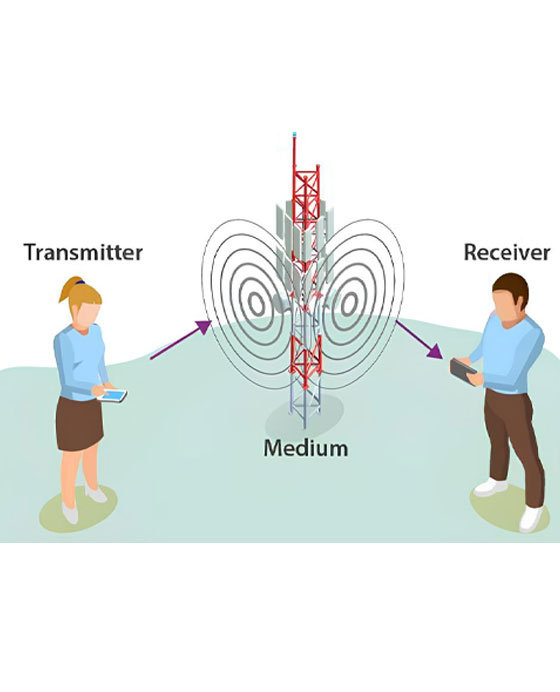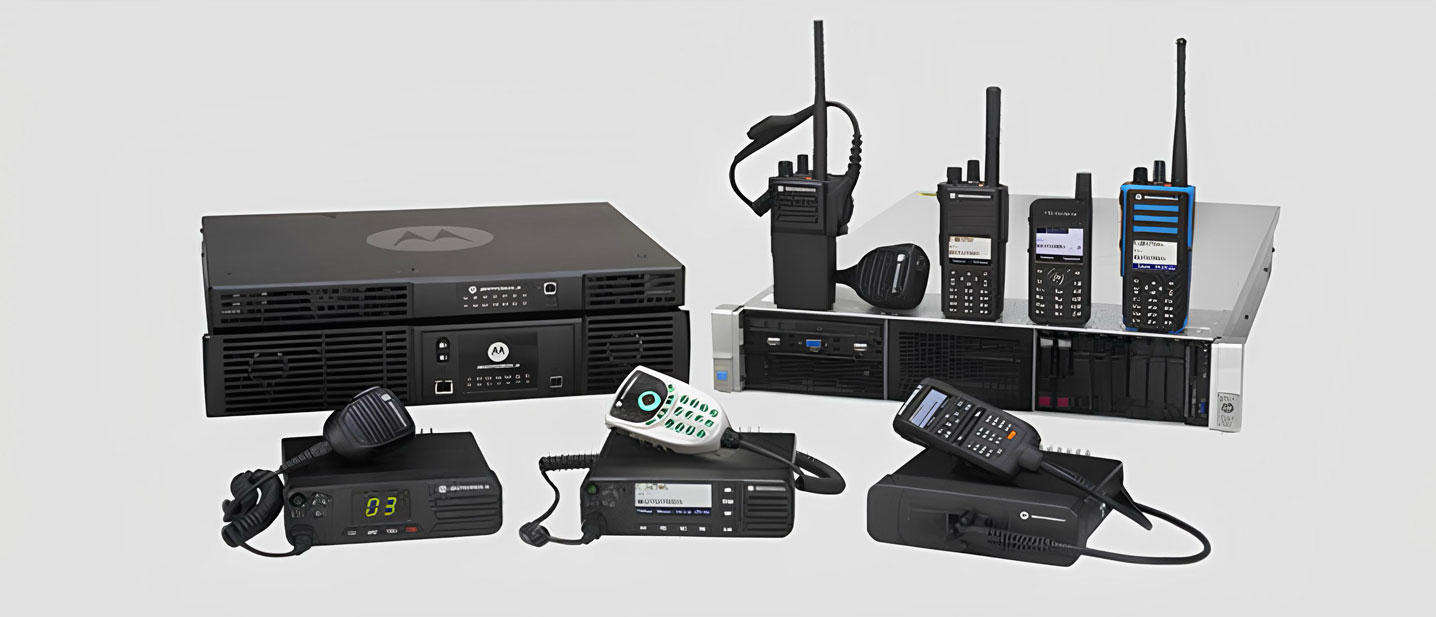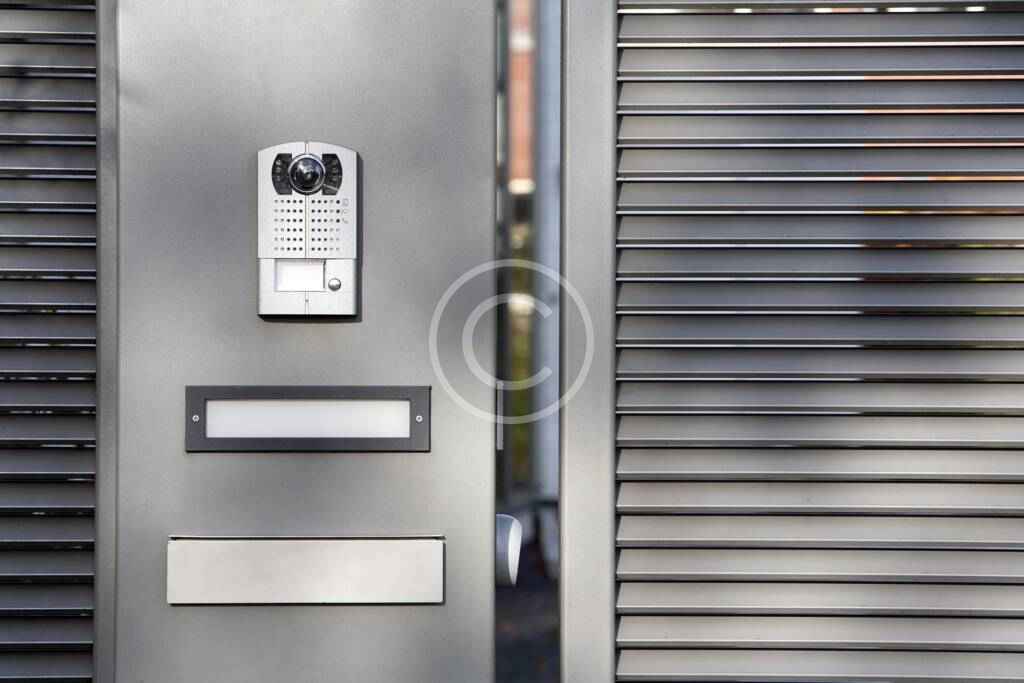Radio Communication System
Radio communication system works with the aid of a transmitter and a receiver both equipped with an antenna. The transmitter with the help of an antenna produces signals which are carried through a radio carrier wave. The receiver also with the help of an antenna receives the signal. The modern two-way radio system (2WRS), which is an alternative name for radio communication systems, typically has three user modes. A portable radio user has a handheld transmitter-receiver, or transceiver, device that runs on batteries and is easy enough to take almost anywhere, a mobile radio user usually has a transceiver mounted inside a vehicle, and a fixed or base radio user sits at a station with stationary radio equipment. The transportable radio may be carried and operated during stationary times. Radio electronics have improved a lot since the early 1900s, as there have been breakthroughs in battery technology that increase the talk time for portable radios. Some technologies even allow for radio transmit power auto-adjustment to match the user locations relative to the fixed stations.


Reasons of Radio Communication
System : Walkie-Talkie
Walkie-talkie systems, also known as two-way radio systems, serve various purposes across different industries and scenarios due to their versatility and reliability. Here are some common reasons for using walkie-talkie systems:
-
Efficient Communication
-
Durability
-
No Dependence on Cellular Networks
-
Emergency Communication
-
Privacy and Security
-
Cost-Effective
-
Wide Range of Frequencies
-
Interoperability
-
Location Tracking
-
Multi-Channel Support
Walkie-talkies often have multiple channels, allowing users to switch to a clear channel if one is congested with traffic or interference.
-
Noise Reduction
-
Government and Public Services
-
Recreation and Hobbies
Brand We offer

Mauris eu nisi eget nisi imperdiet vestibulum. Nunc sodales vehicula risus. Suspendisse id mauris sodales, blandit tortor eu, sodales justo. Morbi tincidunt, ante vel suscipit volutpat, turpis enim volutpSectetur adipiscing elit, sed do eiusm onsectetur adipiscing elit, sed do eiusm od tempor incididunt ut labore. Ut vel placerat eros, eu tincidunt velit. Consectetur adipiscing elit, adipiscing elit, sed do.
Sed ut perspiciatis unde omnis iste natus et
Lorem ipsum dolor sit amet, consetetur sadipscing elitr, sed diam nonumy eirmod tempor invidunt ut labore et dolore magna aliquyam erat, sed diam voluptua. At vero eos et accusam et justo duo dolores et ea rebum. Stet clita kasd gubergren, no sea takimata sanctus est Lorem ipsum dolor sit amet.
Aliquam laoreet sed neque ac vehicula. Cras congue eros nec quam laoreet, in viverra erat bibendum. Cras turpis urna, vulputate at est vitae, posuere lobortis erat.


Lorem ipsum dolor sit amet, consetetur sadipscing elitr, sed diam nonumy eirmod tempor invidunt ut labore et dolore magna aliquyam erat, sed diam voluptua. At vero eos et accusam et justo duo dolores et ea rebum. Stet clita kasd gubergren, no sea takimata sanctus est Lorem ipsum dolor sit amet.
Aliquam quis lobortis quam
Curabitur pellentesque odio magna, id malesuada arcu sodales ut. Sed sed quam ut ex bibendum commodo id id magna. Aliquam sed ligula sed ante blandit volutpat. Ut bibendum, nisi et mattis vulputate, odio arcu aliquet metus, nec dapibus risus risus quis lectus.
Lorem ipsum dolor sit amet, consetetur sadipscing elitr, sed diam nonumy eirmod tempor invidunt ut labore et dolore magna aliquyam erat, sed diam voluptua. At vero eos et accusam et justo duo dolores et ea rebum. Stet clita kasd gubergren, no sea takimata sanctus est Lorem ipsum dolor sit amet.
At vero eos et accusam et justo duo dolores et ea rebum. Stet clita kasd gubergren, no sea takimata sanctus est Lorem ipsum dolor sit amet. Lorem ipsum dolor sit amet, consetetur sadipscing elitr, sed diam nonumy eirmod tempor invidunt ut labore et dolore magna aliquyam erat, sed diam voluptua. At vero eos et accusam et justo duo dolores et ea rebum. Stet clita kasd gubergren, no sea takimata sanctus est Lorem ipsum dolor sit amet. Lorem ipsum dolor sit amet, consetetur sadipscing elitr.

